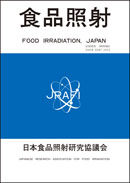Volume 42, Issue 1-2
Displaying 1-6 of 6 articles from this issue
- |<
- <
- 1
- >
- >|
-
2007 Volume 42 Issue 1-2 Pages 1-3
Published: September 30, 2007
Released on J-STAGE: June 28, 2010
Download PDF (365K) -
2007 Volume 42 Issue 1-2 Pages 4-8
Published: September 30, 2007
Released on J-STAGE: June 28, 2010
Download PDF (500K) -
2007 Volume 42 Issue 1-2 Pages 9-13
Published: September 30, 2007
Released on J-STAGE: June 28, 2010
Download PDF (493K) -
2007 Volume 42 Issue 1-2 Pages 14-23
Published: September 30, 2007
Released on J-STAGE: June 28, 2010
Download PDF (1132K) -
2007 Volume 42 Issue 1-2 Pages 24-33
Published: September 30, 2007
Released on J-STAGE: June 28, 2010
Download PDF (8396K) -
2007 Volume 42 Issue 1-2 Pages 35-42
Published: September 30, 2007
Released on J-STAGE: June 28, 2010
Download PDF (2983K)
- |<
- <
- 1
- >
- >|
